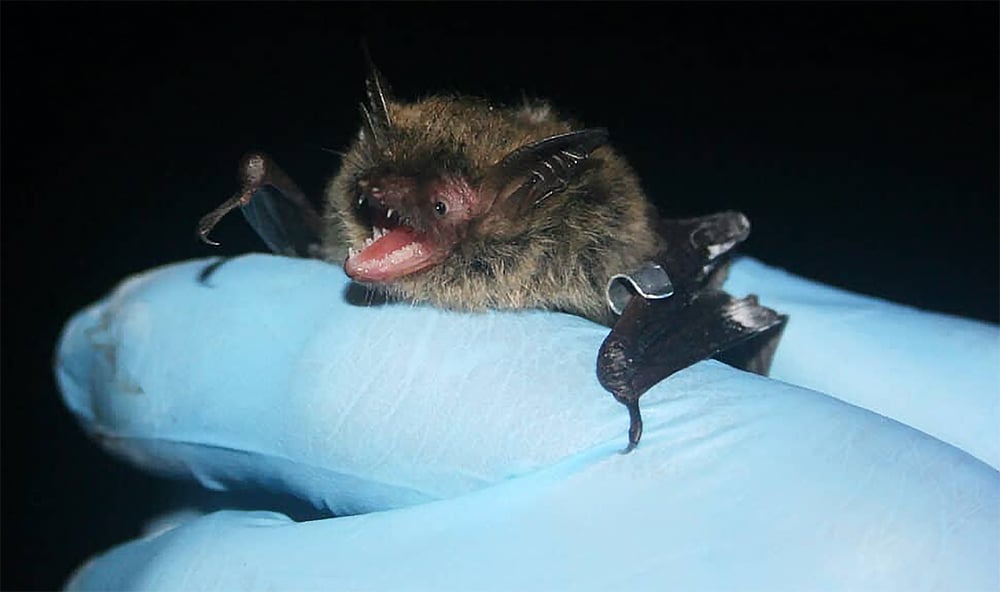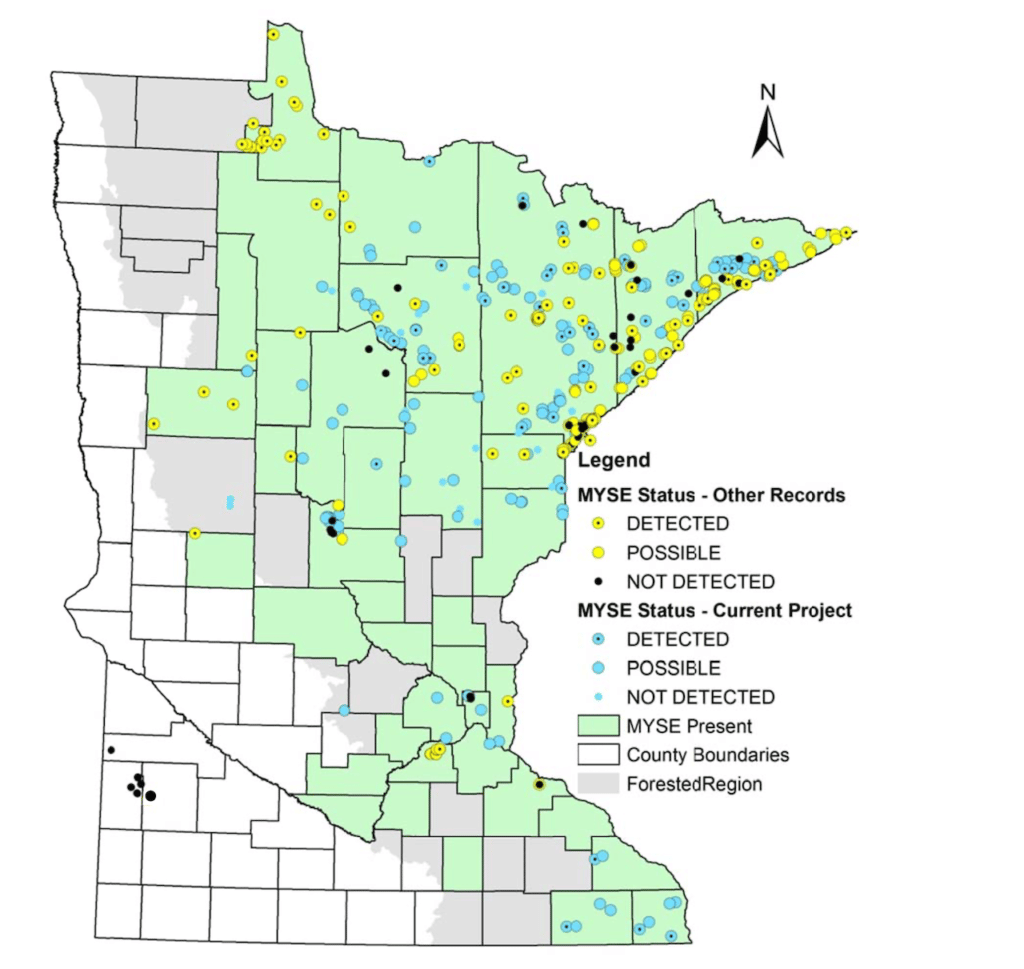
A bat species found throughout the forested regions of Minnesota has been declared endangered by the federal government, after its population has plummeted over the past 18 years. The northern long-eared bat’s primary threat is the fungal white-nose syndrome, which has caused its numbers to drop by more than 90 percent since the disease was first detected in 2006.
The goal of classification under the Endangered Species Act is to help remaining bats survive. It could affect decisions about logging, highway construction, and other development in northern Minnesota.
“This listing is an alarm bell and a call to action,” said U.S. Fish and Wildlife Service Director Martha Williams. “White-nose syndrome is decimating cave-dwelling bat species like the northern long-eared bat at unprecedented rates. The Service is deeply committed to working with partners on a balanced approach that reduces the impacts of disease and protects the survivors to recover northern long-eared bat populations.”
Preserve habitat, protect survivors
The species roosts in trees, usually large, old individuals, which may require protection to preserve the habitat. The bats spends the winter in caves, including the Soudan Underground Mine in Tower. The Soudan bat population is afflicted with white-nose syndrome, which causes the animals to overheat. They fly outside to cool off, where they use up fat reserves and ultimately freeze or starve. While thousands of bats were once observed in the Soudan Mine each winter, not a single specimen was seen last year, according to the Duluth News Tribune.

Officials acknowledge there is little they can do to help the bats, unless a cure for white-nose syndrome is found. But the moves to protect the species’ habitat is intended to save as many of the bats that are left as possible. The U.S. Fish and Wildlife Service is also engaged in extensive research to develop treatments that will reduce the harm from white-nose syndrome.
Protection efforts impact on industry
Some politicians are criticizing the protection efforts, saying it is a burden to loggers and other industries.
“The only result we will see from these misguided restrictions is devastation to rural economies and local family logging businesses,” Rep. Pete Stauber, who represents northern Minnesota in Congress, said in an October statement. “My colleagues and I urge USFWS, state and local leaders and industry to work together on the Lakes States HCP and avoid adding restrictions that could be economically and ecologically harmful.”
The U.S. Fish and Wildlife Service said it is confident it can protect the species with minimal impact on industry. Since listing the species as threatened in 2015, the agency has already approved 22 projects for logging, wind power, and other activities that mitigate impacts on the bat species. They are also making available tools to make compliance easier and to reduce delays in approvals.
More information:
- Northern long-eared bat reclassified as endangered under the Endangered Species Act
- Listing of bat as endangered will impact logging, road projects in northeastern Minnesota – WTIP
- Northern Long-eared Bat – USFWS

